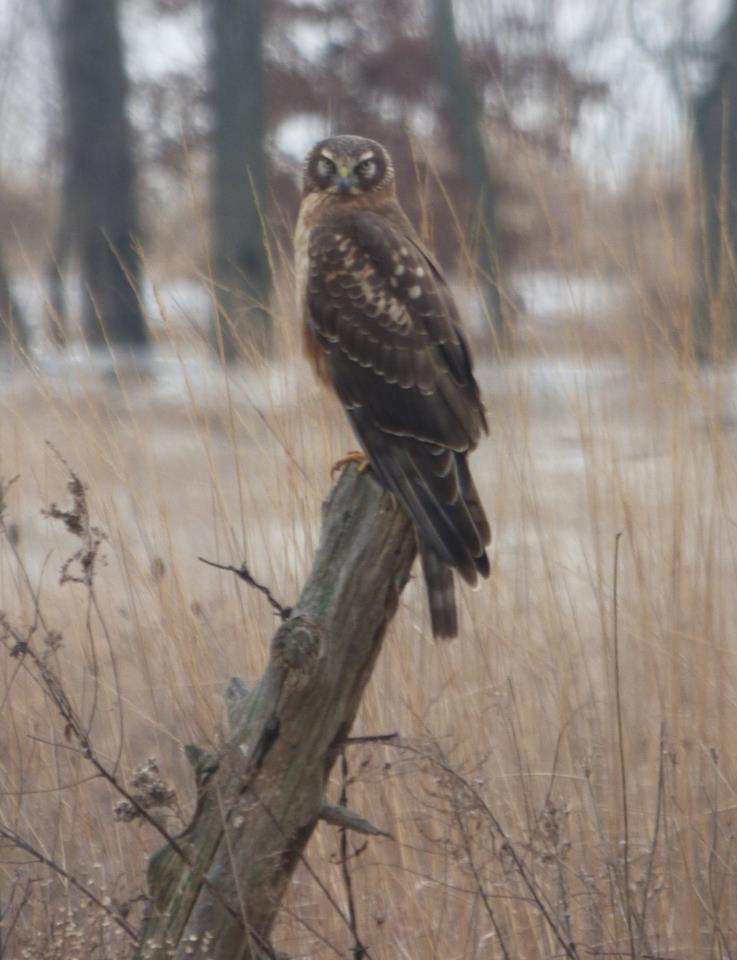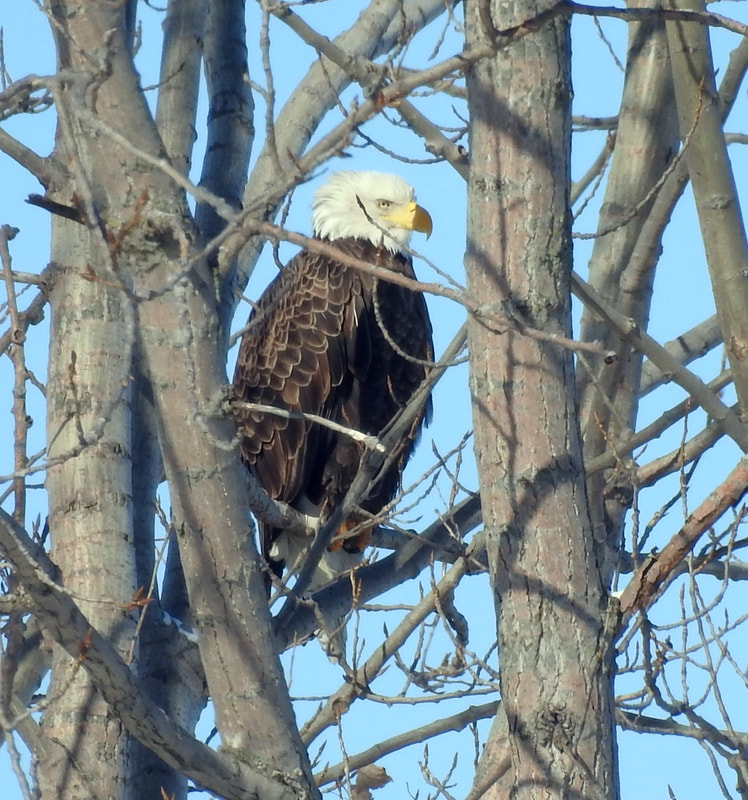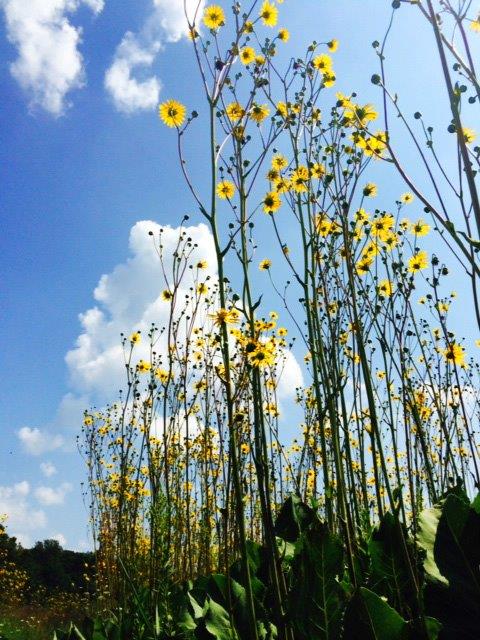By Curt Burnette
Going south for the winter from Indiana to most people would mean heading down to Florida or some other Deep South destination. But if you normally spent the summer far north of the Midwest, going south for the winter might mean heading down to northern Indiana. This is, in fact, what some species of birds do. During the winter months, the Limberlost plays host to northern harrier hawks and short-eared owls.
At the Limberlost we generally see northern harriers starting in the fall, though the winter, and into early spring. They are very interesting and unusual hawks in several ways. First of all, they are the most like an owl of any type of hawk there is. They have a facial disk like owls have to help direct sound to their ears, so they use both sight and sound to hunt. They do not soar high above the ground like raptors that use just their eyes, but stay close to the ground to hear prey. They are very acrobatic as they fly and will even hover above prey before dropping down on them. And they are sexually dimorphic, which means that males and females look different from each other. Males are smaller and grey, while females are larger and brown. Both sexes have a white rump patch, though, that is easy to spot as they soar through open areas like Lmberlost prairie and marsh.
Short-eared owls are ground-roosting birds of the same open areas that harriers prefer. They roost communally, which means they spend the daytime together in thick clumps of grass or other vegetation. These owls arrive at the Limberlost later than the harriers and leave earlier. There are fewer of them in our area and they are harder to see, as they come out at dusk like other owls, although often a bit earlier than most owls. They don't hoot like some owls do, but instead make an odd squawking sound. Since they live in the same habitat and have similar behaviors as the harriers, short-eared owls are the night shift and the harriers would be the day shift. There is a bit of overlap with the two shifts since these owls come out before the harriers retire for the night. Apparently the owls are not fond of their daytime counterparts. Several people, including me, have watched short-eared owls chasing and harassing the northern harriers. They must not want the competition, and are encouraging the harriers to quit their shift and go home.
The best place to go to see these two interesting birds is the 850 acre Limberlost Swamp Wetland Preserve. While driving slowing down County Line Road during the day, watch for the acrobatic harriers swooping low to the ground in the open areas. To see the owls at dusk, park in the gravel parking lot where Jay County road 50E intersects with County Line Road, or drive slowly through the preserve and watch for these graceful owls also flying low to the ground. It's worth a visit to the Limberlost this winter to meet and enjoy these two fascinating feathered visitors from the north!


















 RSS Feed
RSS Feed
